New York Yankees: Ten Unsung heroes from the 2000s
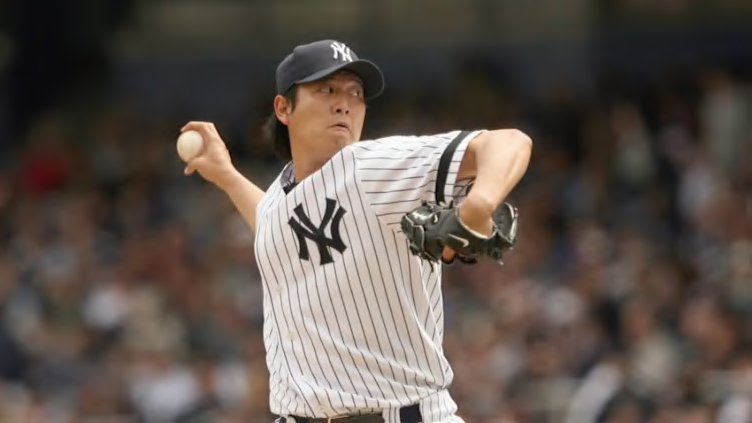
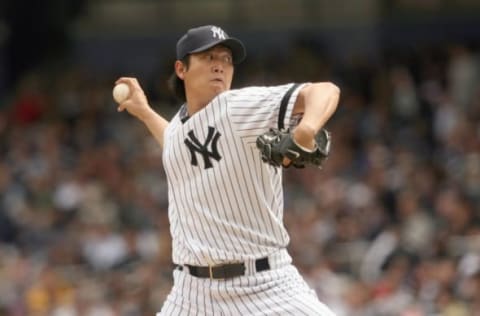
To kick off the new millennium, the New York Yankees brought home their 26th World Series Championship. To bookend the decade, the Yanks won their 27th title. In between and during those championship runs, a handful of unsung heroes provided Yankees fans with memories that they could never forget and would never have expected at the time.
From Aaron Small’s undefeated run in 2005 to the 2009 World Series and the Philadelphia Phillies kryptonite known as Damaso Marte.
Earlier this month, Yanks Go Yard took a look at unsung heroes of the 2010s. The decade wasn’t one Yankees fans will be happy with, in the long run. The team was unable to reach the World Series and although the Yankees were able to win two in the decade prior, the 2000s might have been more painful.
The team suffered a devastating loss to the Arizona Diamondbacks in the 2001 World Series, a young Florida Marlins team would shock the organization two years later.
The following season, the Boston Red Sox would break the long-standing Curse of the Bambino and in the next three seasons, Divison Series exits left a sour taste in the mouth of the fanbase.
Throughout the ups and downs, a group of players will live on in the memories of die-hard Yankees fans. Whether it was a journeyman pitcher or veteran slugger with one last gasp, there were a number of heroes that get their fair share of love from the Yankees faithful on Old Timer’s Day.
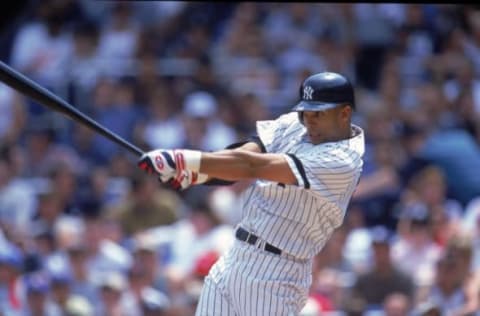
OF David Justice (2000-2001)
The Yankees would meet David Justice in the postseason many times in the 1990s. He played for the Atlanta Braves in 1996 and would beat the Yanks in 1997 with the Cleveland Indians.
As the Yanks offense began to slow down in 2000, general manager Brian Cashman shipped P Jake Westbrook, OF Ricky Ledee, and P Zack Day for Justice and the veteran did not disappoint.
In 78 games, Justice hit .305/.391/.585 with 20 homers. Justice would continue his strong play in the postseason.
He took home the 2000 ALCS MVP Award after a clutch three-run home run in the clinching game of the series. Justice had a pair of homers and four extra-base hits and eight RBI to send the Yankees to the World Series against their inter-city rival New York Mets.
As Michael Kay said in his legendary call of the moment, “Get your tokens ready! You might be boarding the Subway!”
Justice would be traded to the Mets following the 2001 season bringing the next unsung hero of the 2000s into town.
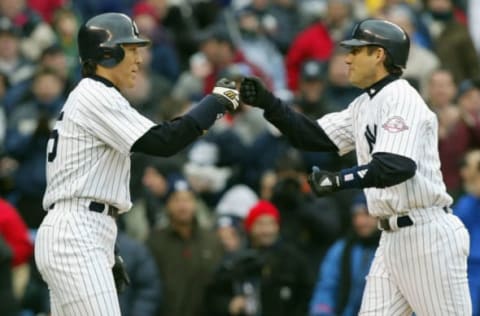
3B Robin Ventura (2002-2003)
Yes, Robin Ventura was an unsung hero during this decade. In one of the rare cases of a trade between the Yankees and the Mets, Ventura was shipped to New York for David Justice following the 2001 season.
Oh, how that would pay off for the Yankees and sting the Mets at the time.
Ventura would earn his second All-Star appearance at the age of 34, 10 years after his first trip to the festivities. He would mash 27 homers, 19 of which came in the first half of the season.
Ventura also got his revenge against the Mets with a 10th inning home run in Shea Stadium that year.
Ventura didn’t put up otherworldly stats or have an epic postseason moment. Instead, he brought additional pain to the Mets fanbase and gave the Yanks a legitimate option at third base after Scott Brosius retired.
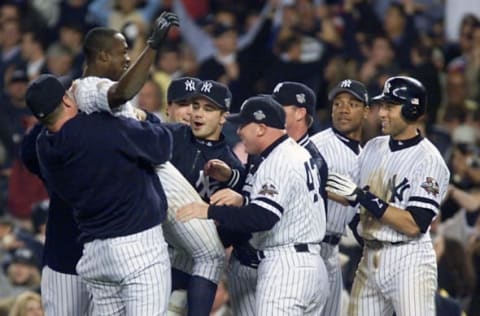
2B Alfonso Soriano (1999-2003)
Alfonso Soriano was one of the Yankees last “homegrown” talents. New York acquired him from the Hiroshima Toyo Carp in 1998 and he made his MLB debut a year later. By 2001, Soriano became the Yanks’ everyday second basemen and was a key contributor during the team’s run to the World Series that year.
In the 2001 World Series, Soriano set himself up to become a legend in the city. In the wake of the tragedy on 9/11, Soriano saved the day in Game Three with his glove, something no fan at the time could expect. In the top of the 11th, with the bases juiced, he made a diving stop. The next inning, he hit a walk-off single.
Four games later, with the game tied in the top of the 8th with Yankee villain Curt Schilling on the bump, he crushed a home run into left field. Soriano was that close to hitting one of the most legendary home runs in franchise history.
Unfortunately, that highlight remains hard to watch as those final innings marked the end of the late-90 pinstripe dynasty and an extremely painful defeat in the desert of Arizona.
The next season, Soriano had an MVP-caliber season, as he posted a .300/.332/.547, with 39 homers and 41 stolen bases, falling just short of a historic 40-40 season. He would follow that campaign up with a similar performance in 2003 before he was traded for Alex Rodriguez.
It’s hard to call a back-to-back All-Star second baseman (Soriano would go on to make eight-straight ASG appearances) an unsung hero, but he deserves more recognition than he receives today. The A-Rod trade kept his time in pinstripes short. Still, he put together one hell of a highlight reel.
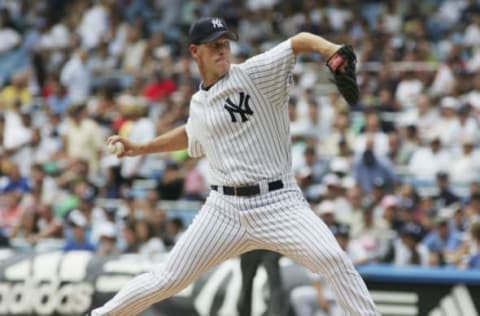
P Shawn Chacon (2005-2006)
Here are general manager Brian Cashman’s comments after news of the Shawn Chacon trade broke, “Saturday we have a starter now. It’s as simple as that.”
That doesn’t exude much confidence, does it?
Well, the Yankees and their fans couldn’t have had much hope for Chacon, he was 1-7 with a 4.09 ERA in 12 starts and a bullpen appearance before the acquisition. Now, the ERA is fairly impressive coming from the hitter-friendly park of Coors Field but he wasn’t an addition that the team would likely need to rely on for the entire season.
In what will go down as the historic “Chacon-Small run” (more on Small next), Chacon would help carry the rotation down the stretch. He posted a 7-3 record with a 2.85 ERA.
Chacon’s heroics wouldn’t end in the regular season. He was on the mound in the ALDS, in the Bronx with the Yanks facing elimination. It would essentially be his swan song in New York (his 2006 campaign was ugly). He went 6.1 innings, allowing two runs on just four hits. The Yanks would hold on for the victory and stay alive for one more game.
P Aaron Small (2005-2006)
Journeyman pitcher Aaron Small was about to call it quits. He spent most of his career in the minors and he wasn’t pitching well enough to be a serious contender for a spot in the New York rotation in ’05.
Then, an injury bug hit and Small found himself with a spot start in July. He would pitch well (5.1 IP, 3 ER) and the Yankees bats would come through to give him his first win of the season. Small would then go on a tear, he ended the year 10-0, with a 3.20 ERA. His best performance came in Oakland where he threw a complete-game shutout.
Small’s 2005 season is straight out of a Disney movie, a 33-year-old career minor leaguer goes undefeated helping his team clinch a division title. He recently spoke with The Athletic and it was a fun look back at his career in the Bronx.
OF Melky Cabrera (2005-2009)
It seems like ages ago that Melky Cabrera was in pinstripes. Since he was traded to the Atlanta Braves following the 2009 season, he has played on seven different teams.
Cabrera’s 15-year MLB run began in New York as one of the team’s top prospects. He was thrown into the fire in 2006, a year after clubhouse buddy Robinson Cano burst onto the scene.
For the next four seasons, Cabrera would lockdown left and center field for the Yanks. In his Yankees career, he posted a .269/.331/.385 line. Although his best years were ahead of him, there was no denying that he was a reliable outfield option. “The Melk Man” proved he could be a part of a championship squad in 2009 as well.
Cabrera began the season on the bench, losing a starting spot to Brett Gardner. However, he regained a role in the starting lineup by the end of April and posted a .274/.336/.416 line in 154 games.
Although he was just 24 at the time, the Yankees would enter the 2010 season with a revamped outfield. Gardner became the everyday left fielder and the Yanks would trade for All-Star centerfielder Curtis Granderson. Cabrera was traded and his career in pinstripes ended abruptly.
It’s also hard to overlook Cabrera’s countless moments in pinstripes. As David Mendelsohn, pointed out on Twitter, Cabrera was sure at the center of some memorable moments for such a short stint with the team.
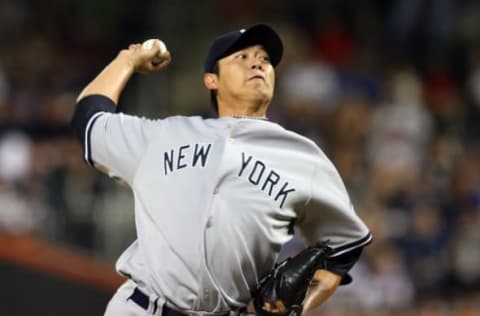
P Chien-Ming Wang (2005-2009)
A hero in his home country of Taiwan, Chien-Ming Wang looked destined to be one of the Yankees’ top arms for a decade. Wang entered the fold in 2005, starting 17 games in his rookie year with a solid 4.02 ERA. His power sinker kept teams at bay as he helped fill one of many holes in the New York rotation.
Wang would follow up his rookie campaign with a stellar 19-6 record, 3.63 ERA, finishing second in Cy Young voting to Johan Santana. Wang was far from a strikeout artist but he led the league in HR/9 in back-to-back seasons.
His style fit well in the hitter-friendly confines of Yankee Stadium and he quickly became a top starter alongside veteran Mike Mussina. He was only 27-years-old by the end of his 2007 campaign and it seemed like he was in line for a long-term extension.
After consecutive 19-win seasons, his career came to a complete stop. In 2008 Wang was hurt running the bases against the Houston Astros and he was never the same. More injuries would pile on and his devastating sinker that helped carry the Yankees rotation for two years gone.
Instead of being remembered as a staple member of the rotation, he has become one of the more intriguing “What-ifs?” in recent memory.
For those interested in a look at Wang in recent years, a fantastic documentary about his big league comeback is on Netflix, “Late Life: The Chien-Ming Wang Story“.
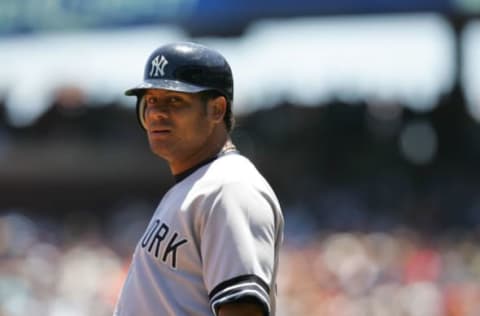
RF Bobby Abreu (2006-2008)
Much like other veteran outfielders throughout the decade, Bobby Abreu was a consistent hitter in the middle of the Yankees lineup. Abreu deserves to be in the same conversation as players like Johnny Damon and Hideki Matsui by the numbers alone.
However, his time spent with underperforming Yankees teams leaves him out of many conversations about the 2000s. In two and a half seasons in pinstripes, Abreu played in nearly every game, hovering around a .300 batting average and .400 on-base percentage. He stole 20-plus bases, drove in 100 RBI each season and played Gold Glove level defense in right every night.
How could a player who puts up All-Star level numbers be an unsung hero?
Well, Abreu never won anything in New York. In his three seasons manning the outfield, the Yanks won just two playoffs games and missed the postseason for the first time since 1993. Again, with players like Matsui, Damon and Nick Swisher being on the decade’s final championship team, memories of Abreu fade.
Abreu was named to the Phillies Wall of Fame in 2019 and did manage to stick around on the Hall of Fame ballot for another season. He performed well in pinstripes for a pair of years and could have easily been a key cog on the 2009 championship team. Heck, New York had to go through his Angles team in a season where he hit .293/.390/.435 with 103 RBI at age 35.
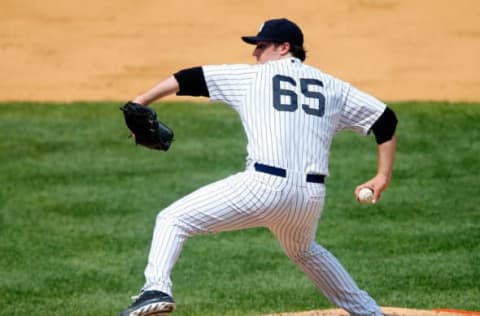
P Phil Hughes (2007-2013)
As the Yankees began their 2009 season with a championship on their mind, top prospect Phil Hughes had yet to solidify a role for himself. A hot start in his rookie season was derailed by an injury and he essentially used the following 2008 season as a rehab year.
Hughes started his journey in 2009 in the minors and got the call up to the big leagues at the end of April. After a short stint of starts, he was moved to the bullpen. By July, he was the setup man for Mariano Rivera.
In 2009, the Yankees were desperate for help in the back-end of their bullpen. David Robertson’s career was just beginning and Phil Coke, Brian Bruney, and Alfredo Aceves were not cut out for the setup man job.
Groomed as a starter since he was drafted, Hughes took one for the team in ’09 and had arguably his best professional season.
From June on, Hughes was lights out. In the second half of the 2009 campaign, Hughes appeared in 31 games, posting a 1.64 ERA and an 0.970 WHIP.
Unfortunately, Hughes would struggle in the postseason and fall into the backdrop of the team’s 27th championship run. However, it’s hard to imagine the Yankees would have been able to cruise through the second half of the regular season without Hughes’ epic stretch.
The highly-touted prospect would never become the pitcher many hoped, which is perhaps why his strong 2009 rarely gets mentioned.
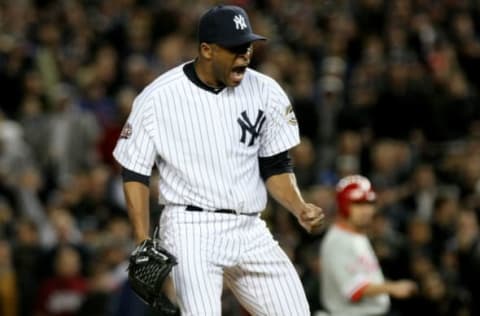
P Damaso Marte (2008-2010)
The Yankees acquired Damaso Marte at the 2008 trade deadline, after a strong six-year stint with the Chicago White Sox and Pittsburgh Pirates.
Unfortunately, Marte couldn’t figure it out in New York. He finished with a 5.40 ERA in 25 games in his first year in pinstripes.
Things weren’t better as the Yankees started their championship run in 2009. As a left-handed specialist, Marte appeared in 21 games, managing a dreadful 9.45 ERA in 13.1 innings in the regular season.
As the playoffs began, Yankees fans and had largely written off Marte as a flop. He had one appearance in the game 2 of the ALDS, unable to record an out after giving up a pair of hits.
Then, something clicked for Marte. He appeared in three games against the Angles in the ALCS, getting left-handers out each time. He only threw nine pitches in the entire series but it set him up to take on the left-handed dominant Philadelphia Phillie’s lineup in the World Series.
Dámaso Marté.
— MLB Network (@MLBNetwork) October 17, 2019
Joe Girardi looks back at his secret weapon in the 2009 #WorldSeries. #WeKnowPostseason pic.twitter.com/f9RwE3gNDd
As Girardi explains in the above tweet, Marte got his first World Series action in Game 1. Although the Yankees lost, he managed to strike out Chase Utley, the Phillies’ best contributor during the series. Utley would go on to mash 5 homers in six games.
Throughout the series, he shut down slugger Ryan Howard as well. Marte and Howard faced off four times and Marte got him out each time.
The most pivotal moment for Marte was in the series-clinching game six. In the seventh inning, with a pair of baserunners, Utley came to the plate. After dominating the Yankees all series, getting him out would hand the keys over to Mariano Rivera, setting the stage for ring number 27.
Marte was able to strike out Utley and get the Yankees within six outs of their most recent championship.
Although the heroics of Alex Rodriguez, Andy Pettitte, and Hideki Matsui will always be remembered in Yankees lore, Marte’s key outs will live on in former Yankees manager Joe Girardi’s memories.
Next. Yankees: 3 worst trades Brian Cashman has made in the last five years. dark
“Damaso Marte was the unsung hero of that World Series, and I’ll never forget him,” Girardi said.